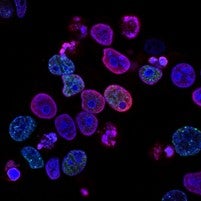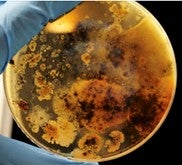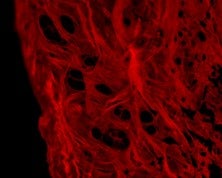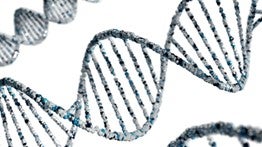Biological and Environmental Sciences
Cell and Molecular Biology
Research
Faculty: Bradley, Camberg, Chandlee, Dutta, Fallini, Gregory, Howlett, Nelson, Kausch, Martin, Roberts, Sartini, Sun, Townson
The faculty in this research area study how genes are expressed in cells, how biopolymer structures define cell identity and function, how cells detect external signals, and how cells and multicellular organisms respond to their environment, grow, and adapt. They use a variety of molecular approaches to profile changes to DNA and RNA and biochemical tools to track the fate of molecules in living cells. These faculty members work in many different model systems, such as bacteria, yeast, human cells, plants, rodents, and marine organisms to decipher important cellular pathways at the molecular level. Physiological systems studied include cytokinesis, metabolism, host defense, hormone signaling, cellular transport, and synthesis of DNA, RNA, polysaccharides, and proteins. Whether the research focuses on fundamental pathways in cell biology, human health and physiology, marine aquaculture, or cell-to-cell communication of external signals, these faculty-led research programs are addressing innovative and cutting-edge questions in cell and molecular biology.
Members of the Bioinformatics and Computational Biology focus area develop and apply data-driven approaches to study biological and ecological systems, leveraging the rapid expansion of data collections from high-throughput molecular technologies. Research topics enabled by this focus area include biological systems modeling, phylogenomics, comparative genomics, phylogenetic information theory, gene copy number variations, multi-omics, and molecular ecology. These research topics have broad applications in metabolic engineering, bio-based chemical production, biomarker development, translational medicine, the understanding of rare genetic diseases, and gene regulations in human pathogens, microeukaryotes, host tissues, cancer cell lines, and others. Students of this focus area learn fundamental skills in programming, genome-scale modeling, data analysis, and data visualization, using a diverse range of molecular techniques, such as whole-genome sequencing, metagenomics, RNA-seq, ATAC-seq, ChIP-seq, and Cleavage Under Targets & Release Using Nuclease (CUT&RUN).
 Cancer Biology
Cancer Biology
Faculty: Dutta, Fisk, Howlett, Sun
Researchers studying infectious diseases in the Cell and Molecular Biology specialization examine the molecular mechanisms that lead to interactions among pathogens, host, the immune system, and the native microbiome. These groups utilize a variety of advanced methods, including cutting-edge high-throughput sequencing, bioinformatics, infection models, genetic, and biochemical tools. Topics currently under investigation include survival of quiescent bacteria in hosts, the interactions among key aquaculture pathogens with their hosts and probionts, the development of novel antimicrobial peptides, the prevention of infectious diseases by promoting a healthy microbiome, control of virulence genes in pathogenic bacteria, and the intersection between viral pathogens and the immune response. Research conducted by these groups has the potential to significantly impact human, animal, and plant health and healthcare, with applications in development of novel antimicrobials, novel probiotic treatments, and developing and improving future vaccines.
 Infectious Disease
Infectious Disease
Faculty: Camberg, Gomez-Chiarri, Martin, Rothman
Researchers studying infectious diseases in the Cell and Molecular Biology specialization examine the molecular mechanisms that lead to interactions among pathogens, host, the immune system, and the native microbiome. These groups utilize a variety of advanced methods, including cutting-edge high-throughput sequencing, bioinformatics, infection models, genetic, and biochemical tools. Topics currently under investigation include survival of quiescent bacteria in hosts, the interactions among key aquaculture pathogens with their hosts and probionts, the development of novel antimicrobial peptides, the prevention of infectious diseases by promoting a healthy microbiome, control of virulence genes in pathogenic bacteria, and the intersection between viral pathogens and the immune response. Research conducted by these groups has the potential to significantly impact human, animal, and plant health and healthcare, with applications in development of novel antimicrobials, novel probiotic treatments, and developing and improving future vaccines.
Macromolecular Structure and Function
Faculty: Camberg, Gregory, Martin, Roberts, Sun
Faculty investigating macromolecular structure and function use a wide range of experimental methods in order to understand how a protein or nucleic acid molecule’s structure determines its function. Topics being explored include protein complexes involved in bacterial cell division; the structure, function, and assembly of the ribosome; the structure and biological activity of antimicrobial peptides; protein complexes involved in cellulose biosynthesis in plants; and the role of protein tyrosine kinases in cancer. Research groups in this area use a variety of model systems including bacteria, viruses, fungi, yeast, plants, and human cell culture, studied with a wide range of experimental techniques including protein purification and biophysical characterization, enzyme kinetics, RNA structural biochemistry, peptide synthesis, molecular cloning, microbial genetics and mutagenesis. Understanding the relationship between macromolecular structure and function provides the fundamental insights into important cellular processes and has the potential to guide the rational design of novel antibiotics and anticancer drugs.
Microbiomes
Faculty: Gomez-Chiarri, Jenkins, Lane, Nelson, Zhang
 Molecular Neuroscience
Molecular Neuroscience
Faculty: Camberg, Howlett, Fallini, Zhang
Members of this CMB research focus area employ advanced molecular and cellular tools including RNA sequencing, longitudinal microscopy, and electron microscopy to unravel the intricacies of neuronal function and dysfunction during aging and throughout neuronal development. In our work, we take advantage of diverse model systems, such as induced pluripotent stem cells (iPSC), human neuroblastoma cells, mouse cerebral cortex, yeast, and the nematode C. elegans. These simple, genetically tractable, and highly relevant model systems allow us to study neuronal function in a highly controlled manner at the single-cell level. By investigating some of the basic molecular and cellular underpinnings of complex processes such as aging, proteostasis, motor-skill learning, and neurodevelopment, we aim to uncover insights that could have important implications for understanding neurodevelopmental, neuropsychiatric, and neurodegenerative disorders, potentially leading to the development of innovative therapeutic strategies to enhance brain health across the lifespan.
Plant and Algae Biology and Function and Biotechnology
Faculty: Chandlee, Jenkins, Kausch, Roberts, Zhang
CMB Specialization Group Co-Coordinator, Associate Professor
CMB Specialization Group Co-Coordinator, Assistant Professor



